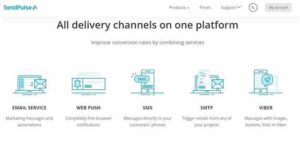The Benefits of e-Health in the Workplace
E-health has become a way of life for many since it was introduced in the late 1990s. A ‘go to’ for people needing health advice, it is a new way for health professionals to reach out. Savvy companies have picked up on its benefits, but like all concepts in reality it has benefits and disadvantages.
What Is E-health?
E-health is the provision of healthcare through electronic means. Apps, telecoms, email, text messages and online information number amongst the delivery methods.
Society is au fait with internet shopping, socialising, and information gathering and it’s taken to online health care as another useful social interaction. The research company Epocrates, states that 247 million Americans have downloaded a health app for personal use. Likewise, a survey by National Business Group on Health suggested 28% of companies offer tele-care options to staff and expected that it would jump to 48% in 2015.
What Are The Benefits?
-
Flexibility
One of the biggest draws to e-health is its flexibility and how easily it fits into a busy lifestyle. More often we expect electronic communications, simply because it’s convenient.
The flexibility of e-health in the workplace means workers can fit in a consultation from their desk between meetings, they can order their medications by email, and use their app to ensure they don’t develop backache from sitting too long. Fitting health into the working day has benefits for both the employer and employee.

Video: statdoctors.com – Mobile Health For Businesses
-
Time
E-health supports the workplace because the time saved enhances productivity.
Less travelling time dedicated to doctor’s appointments and prescription collection means employees can balance their professional life with their personal life. Modern businesses know by now that the two must co-exist.
If it takes a week to access a one-on-one appointment the worker can be absent for that amount of time plus convalescence on the other side. E-health, such as a tele-appointment or ordering online medications, can speed up diagnosis and treatment options – often garnering results within a day. One under-looked aspect of e-health’s time-saving ability is that an employee can spend more of it with a healthcare professional. Most face-to-face appointments last ten minutes with the remainder of the morning off devoted to travelling and waiting. That wasted time can be committed to the healthcare solution instead making for a healthier, happier workforce.
-
Feeling Valued
When businesses offer their employees a health service or allow them to use one in work time, employees feel valued. For example, offering a free tele-counselling service could lead to leaps in staff retention – making it of particular value in fields where skilled staff are valuable. It’s not always about the salary.
-
From a employee perspective
E-health, used at home or in the workplace, can cut down on absence from sickness, absence due to care-giving duties, and ill health brought about by stress over sickness absence.
The Disadvantages
-
Potential for lawsuits
When a company encourages or offers e-health solutions for employee well-being those employees may feel they have no choice but to take this option. They may feel they shouldn’t or can’t see a health professional in real time. When employees feel they don’t have the right to see a doctor it could potentially backfire on a company in terms of a lawsuit.
-
Some experts hold concerns over e-health
They believe that an absence of personal visits may result in second rate diagnoses and treatment. They suggest e-health provides an impersonal service and does not support patients as well as they could and should be. This may result in longer periods of absence or undiagnosed illnesses that infect co-workers.
-
Reliable information is a barrier to e-health.
If a company is recommending and promoting e-health it needs to be from a recognised source. The internet, apps and other medical sources are not all credible nor do they have completeness of information.
The Internet is largely uncontrolled, but two emerging controls are the Health on the Net (HON) code, which offers an approval system for sites that have agreed to ‘quality principles’ and the Health Internet Ethics (Hi-Ethics) who have created the “e-Health Code of Ethics” in response to confidentiality, reliability and privacy issues.
The Future
Video: healthexpress.co.uk – The Future of e-Health
No doubt e-health is here to stay, but it depends on how it’s used as to whether the benefits outweigh the disadvantages in the workplace. For the individual, e-health is a useful tool enabling easy access to medications, simple booking systems and information, but companies that push their employees towards it, so they are able to save time, money and productivity, may feel a backlash.
There is still a way to travel on the e-health road, but it’s one the workplace needs to travel if they intend to keep their workforce productive.
Currently e-health is an option but in the future with our over-stretched health resources, it may be the only viable option. Now is the time to get savvy about e-health in the office.







